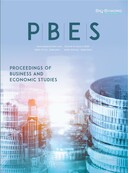Abstract
Under the dual carbon goal, China Certified Emissions Reductions (CCER) and the national carbon market have become important means of emission reduction and control. The tourism industry is a strategic pillar industry of China’s national economy, and scenic spots are the main sites of tourism activities. Research on carbon emissions in scenic spots is of great significance for the construction of low-carbon scenic spots and the realization of the dual carbon goal. In this paper, the research on carbon emissions in tourism is reviewed, the current research progress is discussed, and further prospects are made. The research on tourism carbon emissions in China has a good foundation and achieved certain results. However, there are few studies on micro-scales such as scenic spots. The statistical data caliber and measurement methods of carbon emissions are not uniform, and there is a general lack of uncertainty analysis. Future research should focus on building a multi-spatial dimension research system, unifying the statistical caliber and measurement methods of carbon emission data, increasing uncertainty analysis, and ensuring the robustness of research results.
References
Dong X, Zhang J, Zhang J, et al., 2016, Review of Regional Tourism Carbon Emissions and Carbon Footprint of Tourism Consumption. Chinese Journal of Ecology, 36(2): 554–568.
Li D, 2023, National Carbon Market Has Broken Through a Total of 10 Billion Carbon Market Expansion in 2023, and CCER Restarted to Receive Attention, 21st Century Economic Report.
Sun J, Zhang J, Tang G, et al., 2016, Research Progress and Enlightenment of Carbon Emissions from Tourism Transportation. China’s Population, Resources and Environment, 26(5): 73–82.
Cai M, Fran A, 2013, Research Progress of Global Tourism Carbon Emissions. China Population, Resources and Environment, 23(S2): 1–4.
Shi P, Wu P, 2011, A Rough Estimation of Energy Consumption and CO 2 Emission in Tourism Sector of China. Geography, 66(2): 235–243.
Gössling S, Hall CM, 2008, Swedish Tourism and Climate Change Mitigation: An Emerging Conflict?. Scandinavian Journal of Hospitality and Tourism, 8(2): 141–158.
Perch-Nielsen S, Sesartic A, Stucki M, 2010, The Greenhouse Gas Intensity of the Tourism Sector: The Case of Switzerland. Environmental Science & Policy, 13(2): 131–140.
Xie Y, Zhao Y, 2012, Research on CO 2 Emission Measurement of Tourism Energy Consumption in the Yangtze River Delta. Geographical Research, 31(3): 429–438.
Lamb WF, Wiedmann T, Pongratz J, et al., 2022, Corrigendum: A Review of Trends and Drivers of Greenhouse Gas Emissions by Sector from 1990 to 2018 (2021 Environ. Res. Lett. 16 073005). Environmental Research Letters, 17(4): 049502.
Li B, Zhang Y, Fan L, 2014, Study on the Calculation of Carbon Footprint of Xinjiang Tourism Routes. Cooperative Economy and Technology, 2014(19): 20–22.
Dou Y, Liu Y, Li B, et al., 2012, Carbon Footprint Assessment of Tourism Transportation System in Scenic Spots – A Case Study of Hengshan Mountain. Ecology, 32(17): 5532–5541.
Cheng Z, Cheng J, Zhang A, 2018, Research on Low-Carbon Tourism Cognition and Influencing Factors of Tourists in Wutai Mountain Scenic Area. Tourism Journal, 33(3): 50–60.
Munday M, Turner K, Jones C, 2013, Accounting for the Carbon Associated with Regional Tourism Consumption. Tourism Management, 36: 35–44.
Zhao L, Zhang H, Sun J, 2015, Research on the Influencing Factors of Low-Carbon Operation of Hotel Enterprises-Based on the Survey Data of Hotels in Tianjin. Resources and Environment in Arid Areas, 29(12): 25–30.
Zhou Y, Guan R, 2012, Application of Tourism Carbon Footprint Estimation Model – A Case Study of Fujian Province. China Prices, 2012(12): 85–87 + 91.
Sun Y-Y, 2014, A Framework to Account for the Tourism Carbon Footprint at Island Destinations. Tourism Management, 45: 16–27.
Sun R, 2013, Research on Carbon Footprint and Carbon Management of Jiuzhaigou Nature Reserve Based on Carbon Emission Inventory, thesis, Shanghai Normal University.
Sun R, Gao J, Ye B, 2014, Research on Traffic Carbon Emissions and Low-Carbon Paths in Jiuzhaigou Scenic Area. Journal of Southwest Minzu University (Humanities and Social Sciences Edition), 35(7): 143–148.
Wang Z, Zhang X, Qiu X, 2016, Net Carbon Emission Estimation of Tourist Attractions Based on Carbon Neutralization and Construction of Low Carbon Scenic Spots – Taking Zhenjiang ‘Jiaoshan’ Scenic Spot as an Example. Nanjing Normal University Newspaper (Natural Science Edition), 39(4): 107–113.
Yu H, 2012, Research on the Development of Low-Carbon Tourism in Ancient Towns, thesis, Jishou University.
Li S, Zhong Y, Wang H, et al., 2013, Research on Carbon Emission Measurement and Emission Reduction Path of Zhangjiajie Tourism. Journal of Central South University of Forestry and Technology, 33(3): 120–124.
Yue S, 2012, Study on the Combination of Tourist Attractions Based on Carbon Footprint Theory, thesis, Northeast University of Finance and Economics.
Wang S, Tan J, Ma Y, et al., 2022, Analysis and Prediction of Influencing Factors of Urban Industrial Carbon Emissions Based on LMDI Under Multiple Uncertainties: Taking Suzhou City as an Example. Integrated Smart Energy, 44(2): 1–7.
Jiang R, Xu Q, Li J, et al., 2022, Sensitivity and Uncertainty Analysis of Carbon Footprint Evaluation in Rice-Shrimp Co-Culture Model. Chinese Journal of Ecological Agriculture, 30(10): 1577–1587.
Zhang Y, Song G, Yin H, et al., 2023, Uncertainty Analysis of Carbon Emission Prediction in Integrated Transportation System. Transportation Engineering and Informatics, 21(01): 64–79.
Liu X, Zhao Z, 2019, Evolutionary Game Analysis of Relational Capital Strategy of Tourism Supply Chain Alliance Enterprises Under Uncertain Environment. Tourism Science, 33(2): 42–58.
Han F, You R, Ma S, 2017, Evaluation of Tracking Impact of Ecotourism Planning in Nature Reserve-Taking Sichuan Tangjiahe National Nature Reserve as an Example. Sichuan Forestry Science and Technology, 38(1): 27–31.
Yang L, Lin H, Li D, et al., 2022, Uncertainty Analysis of Greenhouse Gas Emission Estimation of Natural Wetlands in China. Wetland Science, 20(1): 104–110.
Lu H, 2018, Research Progress and Prospect of Tourism Carbon Footprint Measurement. Tourism Research, 10(2): 75–83.
